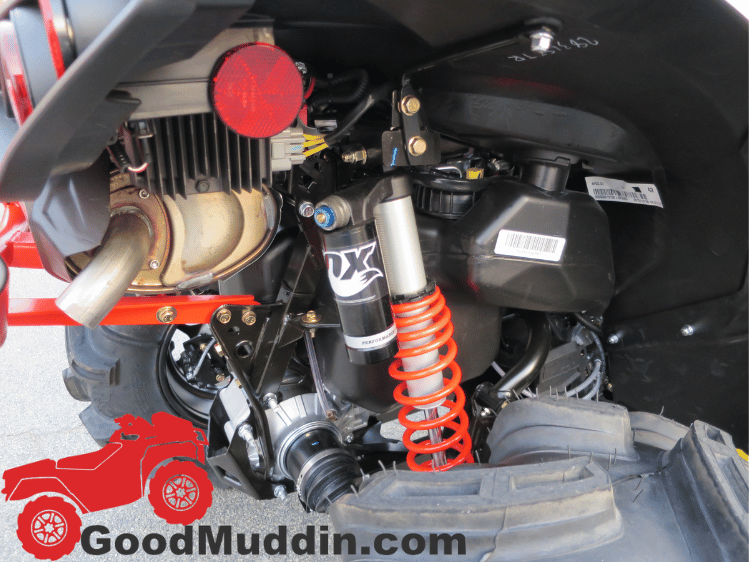A fuel pump on an ATV is a special component of the vehicle’s fuel delivery system. The primary function is to move fuel from the gas tank to the engine, ensuring a consistent and steady flow of fuel to support the engine’s operation.
ATVs typically rely on internal combustion engines that require an exact mixture of air and fuel for combustion. It plays a vital role in maintaining the correct fuel pressure to ensure the engine runs smoothly and efficiently. It is designed to generate enough pressure to overcome any resistance in the fuel lines and deliver the fuel to the engine at the necessary rate.
There are two main types of pumps used, mechanical and electric.
- Mechanical – Some older and smaller ones will use mechanical pumps that use the vacuum from the engine. This vacuum that is created is used to push the fuel to the carburetor, where it’s combined with air to power the engine.
- Electric – Most modern models use electric pumps, especially if they’re fuel injected (EFI) which are mounted inside the gas tank. Electric pumps are more efficient and allow for better control of the fuel delivery system. They are typically powered by the electrical system and use an internal motor to create the required fuel pressure.
Overall, the fuel pump is an important part that ensures the engine receives a constant supply of fuel, contributing to the performance and reliability. When it malfunctions or fails, it can lead to various engine-related issues, such as reduced power, stalling, or difficulty starting the engine. Regular maintenance and knowing when the thing has problems are good to keep your ATV running smoothly and safely.
Signs A Fuel Pump Has Failed
There are several signs that one has failed, but here are the more common ones.
- The engine won’t start.
- The engine won’t stay running.
- Check engine light.
- The engine is hard to start.
- The engine will idle but won’t go higher.
- Not as fast as it used to be.
- The engine sputters.
Some of these symptoms are signs of a bad or dead fuel pump, but they can also be signs of something else. Let’s go over the reasons a one may fail.
Reasons For The Failure
When it comes to the performance of your machine’s fuel delivery system, the fuel pump plays an important role. Understanding the reasons behind theire failure can help you take steps to keep your machine running good. Below are some common factors that can lead to a faulty pump:
- Dirty Fuel – The fuel in your tank may contain impurities, such as dirt, debris, or water. Over time, these contaminants can accumulate and clog the pump and fuel lines, keeping it from working right.
- Wear and Tear – Like any mechanical part, they can experience wear and tear with regular use. As the quad ages, the internal parts, may get worse, leading to reduced efficiency or complete failure.
- Electrical Issues – Electric ones rely on electrical connections to operate. Corroded or damaged electrical contacts can hurt the pump’s power supply, causing it to malfunction or act odd.
- Overheating – Operating an in extreme conditions or running it at high speeds for extended periods can lead to one overheating. Overheating can weaken the pump’s components and shorten its lifespan.
- Low Fuel Level – Running with a low fuel level can cause the pump to overheat. The fuel in the tank helps to cool the pump, so operating with low fuel levels may lead to premature wear.
- Fuel Additives or Improper Fuels – Some fuel additives may not be suitable for engines or can damage fuel system components. Additionally, using fuel with the wrong octane rating can affect the pump’s performance.
- Lack of Regular Maintenance – Not doing regular maintenance, such as fuel filter replacement or fuel system cleaning, can result in issues. A clogged fuel filter, for example, can strain the pump and lead to failure.
- Vibration and Impact – Riding on rough terrain and experiencing vibrations during off-road use. Prolonged exposure to these forces can cause the internal components to loosen or break down.
- Relay or Fuse Problems – In electric pump systems, issues with the relay or fuses can disrupt the pump’s power supply, causing it to stop working. I’ve even seen the backing of the fuse fall out, causing an electrical ghost that took too long to figure out.
- Ethanol Fuel Effects – Some models are not designed to handle high ethanol content fuels, such as 2-strokes and carbureted. The corrosive nature of ethanol can damage fuel lines, seals and other components.
How To Test & Fix
The video below does an amazing job of showing how to test and rebuild a fuel pump that is giving trouble.
Fuel Pump Is Fine, What Else?
If you’ve confirmed that your fuel pump is functioning properly, but you’re still experiencing performance issues, there are several other components and factors you should check to troubleshoot the problem. Here’s a list of key areas to look in to.
Be sure to check the fuel filter and fuel lines to make sure they’re not clogged, old, or falling apart.
Check the spark plugs, air filter, and the carburetor if you have one. Basically, try everything in this post.
